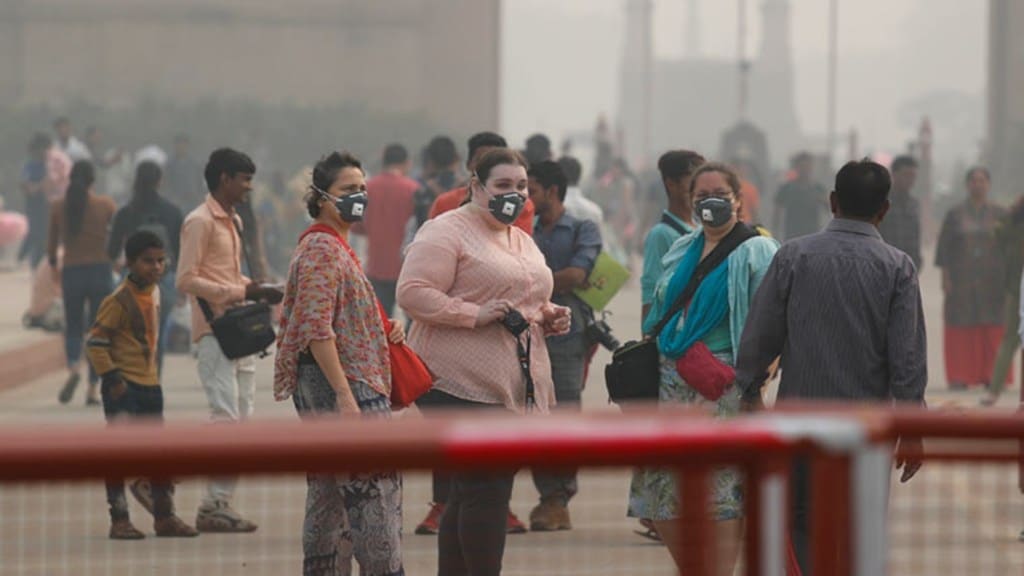As Delhi transitions from clear summer skies to the grip of winter, the city finds itself once again in the throes of deteriorating air quality and rising pollution levels, with the Air Quality Index (AQI) reaching alarming heights.
Many areas in Delhi-NCR have already crossed an AQI of 400, the air quality in the national capital hovering between the ‘very poor’ and ‘severe’ category. The return of Covid-19 masks is not to combat the virus but to shield residents from the escalating pollution.
Also Read:Smog shrouds Delhi as air quality dips to ‘very poor’ category, AQI at 306
What’s alarming is the unprecedented spike in the AQI observed in the last week of October, making October 2023 the most toxic month in terms of air quality since 2019 in Delhi. This early rise in AQI raises concerns, prompting us to analyse the reasons behind Delhi-NCR’s worsening air quality year after year.
Here’s why air quality in Delhi is deteriorating
With each passing year, the AQI in Delhi-NCR has exhibited a consistent upward trajectory, solidifying its status as one of the most polluted capital cities in the world. Although the increase in electric vehicles is helping to contain air pollution slightly, it is not enough.
Also Read:Delhi air quality remains ‘very poor’ despite 15-point winter action plan in place
- Particulate Matter Accumulation: One significant contributor to the declining air quality in Delhi is the accumulation of particulate matter (PM) in the atmosphere. In recent years, October and November brought relief with rainfall that washed away PM. However, this year, limited rainfall in these months has led to the buildup of PM, intensifying air pollution.
- Farm Fires in Punjab and Haryana: Every year, when the harvest season kicks off in Punjab and Haryana, a noticeable increase in farm fires is witnessed. It is anticipated that this year’s harvest season will extend beyond the usual timeframe, leading to more farm fires. These fires release copious pollutants into the air, significantly impacting Delhi-NCR’s air quality.
- Wind Direction: Wind direction plays a pivotal role in Delhi’s air pollution dynamics, particularly during winters. Post-monsoon, northwesterly winds carry dust and smoke from stubble burning in Haryana and Punjab towards Delhi. A shift in wind direction can temporarily alleviate air quality, as seen on October 25, 2023, when winds changed from north to northeast, providing a brief respite.
- Temperature Inversion: The occurrence of temperature inversion during Delhi’s cold winters exacerbates pollution. Inversion creates a layer of warm air above cold air, trapping pollutants near the surface. This allows emissions from various sources, including stubble burning, vehicles, and industries, to accumulate, forming a thick layer of smog.
- Vehicular and Industrial Emissions: Delhi’s massive population and high number of vehicles are significant contributors to air pollution. Vehicular emissions, accounting for around 25 per cent of PM2.5 levels in Delhi, are a major concern. Moreover, industries in and around Delhi release harmful gases and chemicals into the atmosphere, compounding the pollution issue.
- Other Sources of Pollution: Dust storms carrying particles from arid regions, emissions from firecrackers during festivals, and domestic biomass burning for heating are additional pollution sources that intensify during the winter months. For instance, a study conducted by IIT-Kanpur revealed that 17-26 per cent of all particulate matter in Delhi during winter is due to biomass burning.
Addressing Delhi’s dire air quality situation
Initiatives like ‘Red Light on, Gaadi off’ are in motion to address vehicular and biomass-burning emissions that contribute to the rising PM2.5 levels.
Delhi Chief Minister Arvind Kejriwal had earlier announced a 15-point winter action plan to curb pollution caused by vehicles, biomass burning, dust, etc. Now, this plan is being implemented on the ground, one by one, to reduce pollution in the national capital.
(With inputs from agencies)


